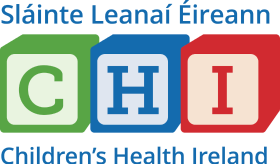Vitamin D and bone health in children
Vitamin D is essential for healthy bones. It helps the body absorb calcium from food, which is needed to build strong bones and teeth. Without enough vitamin D, bones can become soft, weak or misshapen, especially during periods of rapid growth.
How can I support my child's bone health?
- Encourage safe sunlight exposure.
- Daily vitamin D supplements: Especially in winter or if your child is at risk.
- Eat vitamin D-rich foods: Oily fish, eggs, and fortified cereals or dairy alternatives.
- Exercise and stretching: Supports bone strength and can ease aches.
What are the symptoms of low Vitamin D in children?
- Aching legs or arm bones (especially at night).
- Delayed walking or clumsiness.
- Bow legs or knock knees.
- Tiredness or general weakness.
- Fragile bones that fracture more easily.
In more severe cases, it can lead to a condition called rickets, where the bones develop abnormally.
Risk factors
Vitamin D deficiency is very common in Ireland, particularly in children who:
- Have darker skin.
- Spend most of their time indoors.
- Cover their skin for cultural or medical reasons.
- Have a restricted diet or food allergies.
- Are overweight.
- Are going through a rapid growth phase.
How is it diagnosed?
A blood test can check your child’s vitamin D level. If levels are low, treatment is safe, straightforward and effective.
What the blood test results mean:
- Over 50 nmol/L: Normal
- 30–50 nmol/L: Low (Insufficient)
- Below 30 nmol/L: Deficient
How is it treated?
If your child is found to be low in vitamin D, they will be given a high-dose supplement for 6–8 weeks, followed by a daily lower dose to keep levels topped up.
With the right treatment, most children improve quickly. It may take a few weeks to months, depending on how low their levels were. Continuing vitamin D long-term helps prevent future problems.
For GPs: Referral Recommendations
Please refer to Orthopaedics if a patient has:
- Bone or leg pain that wakes them at night.
- Delayed milestones or walking difficulties.
- Bowed or knock knees worsening with time.
- Frequent or unexplained fractures.
- Tiredness, weakness, or reduced activity.
Summary
- Vitamin D helps the body absorb calcium, essential for strong bones and teeth.
- Deficiency can cause soft, weak, or misshapen bones, especially during growth.
- Vitamin D deficiency is very common in Ireland.
- Vitamin D levels can be checked with a blood test.
- Low levels should be treated with supplements.
- With the right treatment, most children improve quickly.
